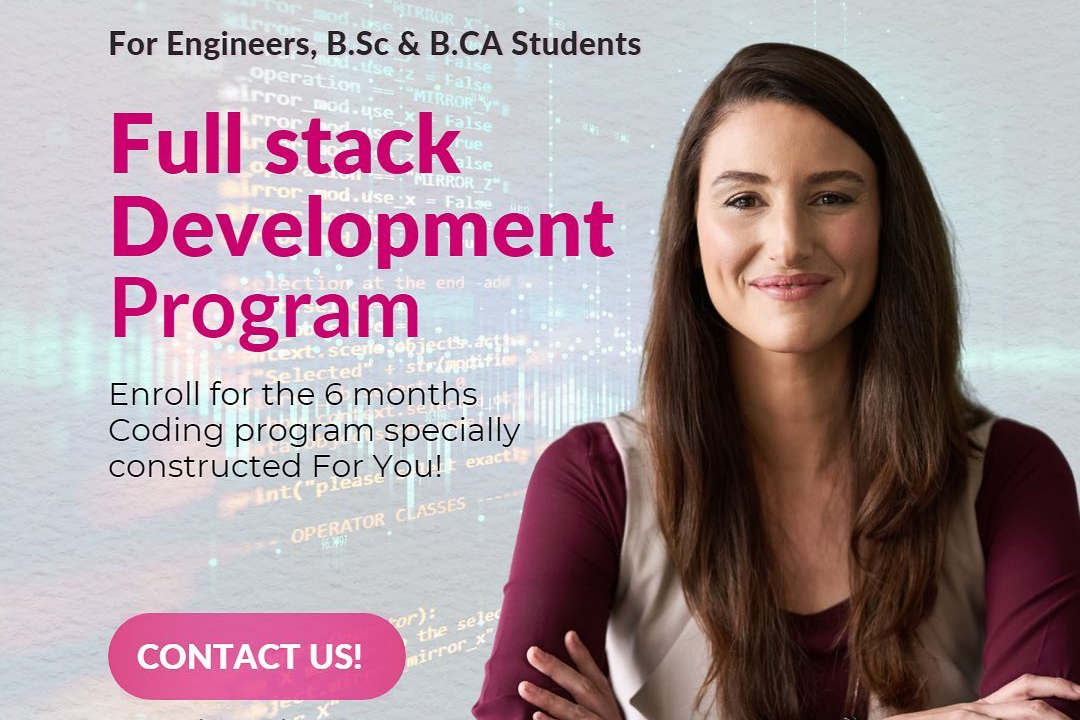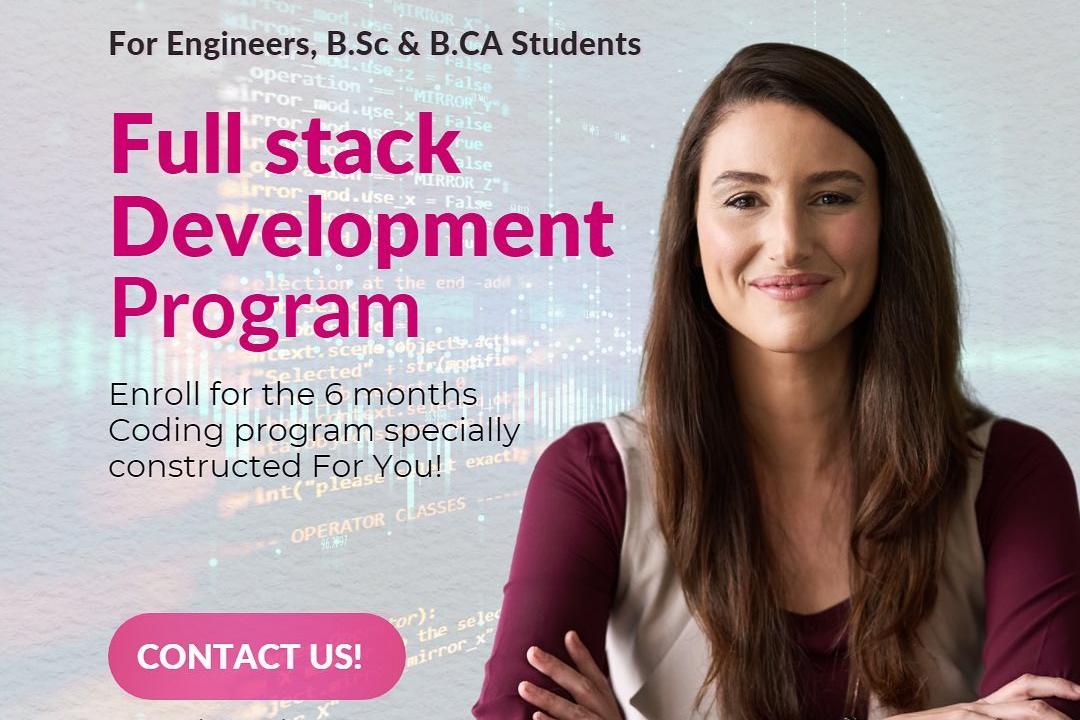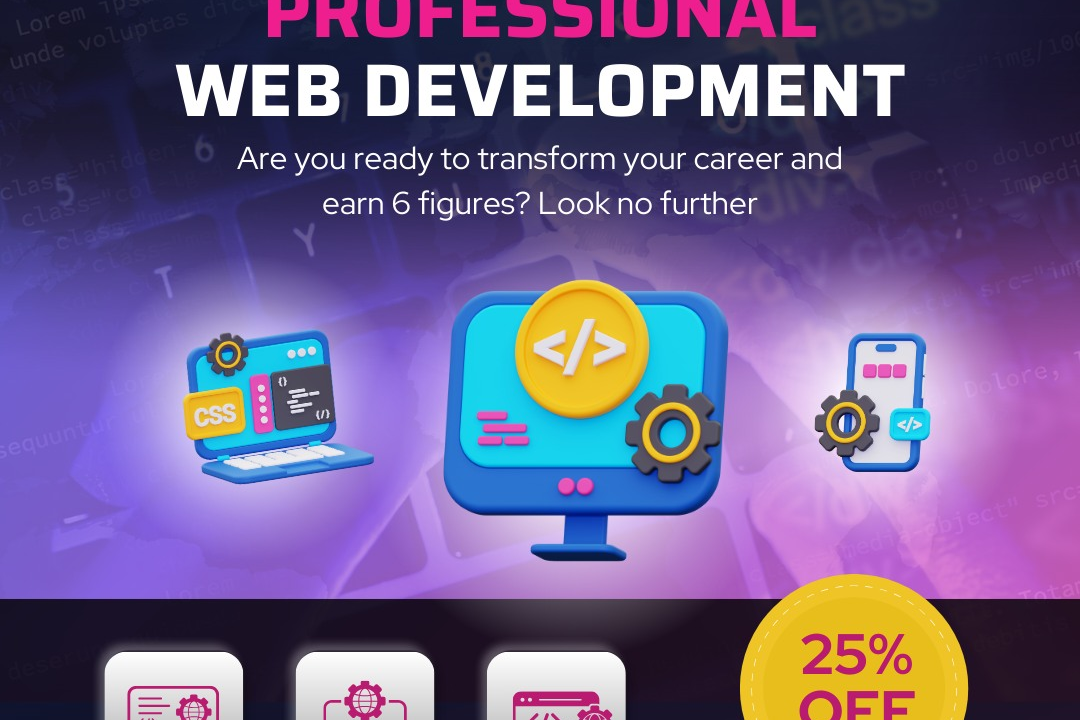Experienced Laravel Interview Question
Advanced Laravel Interview Questions for Senior Developers
Experienced Laravel Interview Question
Experienced Laravel interview questions are highly valuable as they assess a candidate's deep understanding of the framework's advanced concepts, architectural decisions, and best practices. These questions evaluate the candidate's ability to design scalable and maintainable applications, implement complex database relationships, and troubleshoot production-level issues. By asking experienced Laravel interview questions, hiring managers gain insights into the candidate's ability to work effectively within a team, contribute to codebase design, and solve technical challenges independently.
To Download Our Brochure: https://www.justacademy.co/download-brochure-for-free
Message us for more information: +91 9987184296
1 - Explain the MVC architecture in Laravel.
MVC (Model View Controller) separates the application into three interconnected layers: Model (data access and business logic), View (presenting data to the user), and Controller (handling user interactions and data flow).
2) Describe the Eloquent ORM in Laravel.
Eloquent is Laravel's ORM (Object Relational Mapping) framework that provides an expressive and convenient way to interact with the database. It allows you to define models representing database tables and perform CRUD and relation based operations.
3) Explain the middleware concept in Laravel.
Middleware is a mechanism that allows you to intercept HTTP requests and responses. It provides a way to filter, validate, and modify requests before they reach the application, and to perform tasks after the request has been handled.
4) Discuss the routing system in Laravel.
Laravel's routing system uses a simple and expressive syntax to define URL based routes for handling HTTP requests. Routes can be defined in a variety of ways, including simple wildcard routes, resource routes, and group routes.
5) Explain the service container in Laravel.
The service container is a dependency injection (DI) container that allows you to resolve and manage dependencies throughout the application. It facilitates the loose coupling of components and promotes code testability.
6) Describe the event driven architecture in Laravel.
Laravel uses an event driven architecture that allows you to respond to specific events that occur within the application, such as user logins, email sending, and database updates. Events can trigger listeners to perform tasks without tight coupling.
7) Explain the queueing system in Laravel.
The queueing system in Laravel allows you to defer the execution of long running or time consuming tasks to the background, improving application performance. Tasks can be enqueued and processed by worker processes asynchronously.
8) Discuss the blade templating engine in Laravel.
Blade is Laravel's lightweight templating engine that allows you to quickly and easily generate dynamic HTML views. It provides a variety of directives and control flow syntax for creating complex templates efficiently.
9) Explain the testing features in Laravel.
Laravel includes a built in testing framework that facilitates writing unit, feature, and integration tests. The testing framework provides a comprehensive set of assertion methods and helper functions to verify the correctness of application functionality.
10) Describe the authentication mechanism in Laravel.
Laravel provides robust authentication features out of the box. It allows you to easily implement user registration, login, and password reset functionality. It also supports various authentication methods, including social authentication and token based authentication.
11 - Explain the authorization system in Laravel.
Laravel's authorization system allows you to define permissions and roles to control access to specific routes and application features. It provides a flexible way to manage user permissions and enforce access control policies.
12) Discuss the caching mechanisms in Laravel.
Caching is an essential performance optimization technique. Laravel supports different caching mechanisms, including file caching, memcached, and redis. It allows you to store frequently accessed data in a faster storage medium, reducing database load and improving response times.
13) Explain the logging system in Laravel.
Laravel includes a comprehensive logging system that allows you to record application events, errors, and debug information. It provides multiple log channels and supports different log handlers, such as file logging, database logging, and Slack logging.
14) Describe the command line interface (CLI) in Laravel.
The Laravel CLI provides a convenient way to interact with the application from the command line. It includes various commands for tasks such as generating code, running migrations, and performing application maintenance.
15) Explain the Artisan command line tool in Laravel.
Artisan is an advanced command line tool included in Laravel that provides a range of features for developers. It allows you to perform tasks such as creating models, executing migrations, generating controllers, and running custom commands.
Membership Rewards
- Enroll in the American Express Membership Rewards program, which allows you to earn points on purchases made with your card.
- * Link your Amex card to participating loyalty programs to earn bonus points on purchases made at specific retailers and restaurants.
- * Refer friends and family to Amex and earn points for each successful referral.
- Card Usage
- * Choose the Amex card that offers the highest points rewards on the categories you spend the most in.
- * Use your card regularly for everyday purchases, including groceries, gas, and dining out.
- * Take advantage of targeted spending offers that may provide increased points rewards for certain categories.
- Point Earning Activities
- * Use Amex Offer codes to earn additional points on purchases from select retailers and online stores.
- * Sign up for the Amex Points Multiplier program to earn extra points on purchases made at participating businesses.
- * Utilize Amex Experiences to book exclusive events and tours, which often offer bonus points redemption options.
- Redemption Strategies
- * Redeem points for travel, including flights, hotels, and rental cars.
- * Transfer points to airline or hotel loyalty programs for additional redemption options.
- * Use points to purchase gift cards or merchandise from the Amex Travel or Rewards Center.
- * Donate points to eligible charities.
- Other Tips
- * Keep track of your points balance and redemption progress through the Amex app or online account.
- * Use a points calculator to estimate the value of your points before redeeming them.
- * Consider using a travel agency that specializes in Amex points redemption to maximize the value of your points.
- * Take advantage of Amex exclusive promotions and offers to earn extra points or receive discounts on redemption options.
- Course Overview
- This course covers advanced and experienced-level interview questions specific to Laravel, the popular PHP framework. It delves into complex concepts such as architecture, design patterns, testing, performance optimization, and dependency management. By mastering these topics, you can confidently prepare for technical interviews and demonstrate your expertise in Laravel development.
- Course Description
- Delve into the intricacies of Laravel job interviews with our comprehensive course designed for experienced developers. We explore advanced concepts, unit testing, database design, dependency injection, and real-world scenarios to equip you with the knowledge and skills to ace your Laravel interviews and secure your dream job.
- Key Features
- 1 - Comprehensive Tool Coverage: Provides hands-on training with a range of industry-standard testing tools, including Selenium, JIRA, LoadRunner, and TestRail.
- 2) Practical Exercises: Features real-world exercises and case studies to apply tools in various testing scenarios.
- 3) Interactive Learning: Includes interactive sessions with industry experts for personalized feedback and guidance.
- 4) Detailed Tutorials: Offers extensive tutorials and documentation on tool functionalities and best practices.
- 5) Advanced Techniques: Covers both fundamental and advanced techniques for using testing tools effectively.
- 6) Data Visualization: Integrates tools for visualizing test metrics and results, enhancing data interpretation and decision-making.
- 7) Tool Integration: Teaches how to integrate testing tools into the software development lifecycle for streamlined workflows.
- 8) Project-Based Learning: Focuses on project-based learning to build practical skills and create a portfolio of completed tasks.
- 9) Career Support: Provides resources and support for applying learned skills to real-world job scenarios, including resume building and interview preparation.
- 10) Up-to-Date Content: Ensures that course materials reflect the latest industry standards and tool updates.
Benefits of taking our course
Functional Tools
1 - Laravel:
PHP framework designed specifically for web development
Offers a comprehensive set of libraries, tools, and features for rapid application development
Supports modular architecture, resource controllers, and RESTful routing
2) Composer:
Dependency manager for PHP
Manages dependencies for Laravel and other third party libraries
Ensures consistent and up to date packages
3) Artisan:
Command line tool provided by Laravel
Allows developers to interact with the framework, create new migrations, controllers, and views
Provides a convenient way to perform common tasks and automate workflows
4) PHPUnit:
Unit testing framework for PHP
Helps developers write and execute automated tests to ensure the reliability and correctness of their Laravel applications
Supports mocking, assertions, and code coverage analysis
5) PHPUnit Extensions for Laravel:
Laravel specific extensions for PHPUnit
Provides seamless integration between Laravel and PHPUnit
Offers additional tools for testing Laravel models, controllers, and middleware
6) PHPStorm:
Integrated development environment (IDE) optimized for PHP development
Offers code completion, refactoring, debugging, and unit testing tools
Provides enhanced support for Laravel, including syntax highlighting, code navigation, and database integration
Improve Your Writing Quality:
- Proofread carefully: Eliminate grammar errors, typos, and inconsistencies.
- Use specific and vivid language:* Describe details, evoke emotions, and create mental imagery.
- Organize your thoughts clearly:* Structure your writing logically and use headings, subheadings, and bullet points to guide readers.
- Provide evidence and support:* Back up your claims with facts, data, examples, or expert opinions.
- Enhance Your Content:
- Research thoroughly:* Gather relevant and credible information to support your arguments.
- Present multiple perspectives:* Acknowledge and address opposing viewpoints to show fairness and depth of analysis.
- Offer original insights or solutions:* Provide unique perspectives or propose novel solutions that go beyond commonly accepted ideas.
- Engage Your Audience:
- Use storytelling or anecdotes:* Connect with readers on a personal level through relatable stories or real life examples.
- Ask questions or pose challenges:* Engage readers by inviting them to think critically or consider new perspectives.
- Use humor appropriately:* Incorporate humor sparingly to lighten the tone and make your writing more enjoyable to read.
- Optimize for Engagement:
- Use keywords and relevant tags:* Help search engines and readers find your content by using relevant keywords throughout.
- Use social media:* Share your content on social media platforms to reach a wider audience.
- Encourage reader interaction:* Invite comments, discussions, or feedback to foster engagement and build a community.
- Other Tips:
- Get feedback from others:* Ask for constructive criticism from peers, mentors, or editors to identify areas for improvement.
- Practice regularly:* The more you write, the better you will become at expressing your ideas clearly and effectively.
- Read extensively:* Study a variety of writing styles and genres to expand your vocabulary, improve your grammar, and get inspiration.
Browse our course links : https://www.justacademy.co/all-courses
To Join our FREE DEMO Session:
This information is sourced from JustAcademy
Contact Info:
Roshan Chaturvedi
Message us on Whatsapp:
Email id: info@justacademy.co












